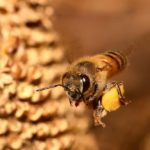Reuters — Washington state eradicated its first Asian giant hornet nest of the year by vacuuming out 113 worker hornets and removing bark and decayed wood near the nest, Washington […] Read more
1.

Nest found in northwestern county near B.C. border

La Ferme Agribec recognized by ALUS Canada for work creating natural areas on farms

From protecting pollinating insects to cutting the hoofprint of cashmere-producing goats, companies are aiming greener






